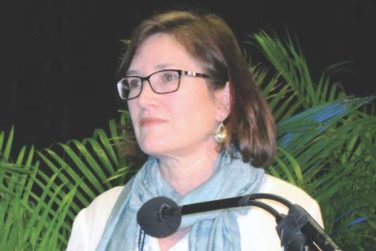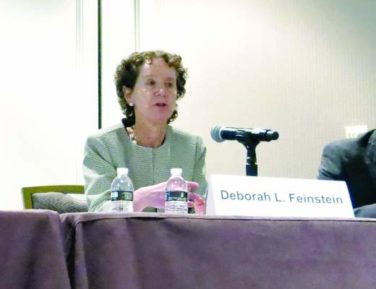AT HIMSS15
CHICAGO (FRONTLINE MEDICAL NEWS) – The federal government’s Shared Nationwide Interoperability Roadmap lays out a grand vision for a single health IT ecosystem, but will it be able to enforce its own standards or be able to meaningfully incorporate the flood of patient-provided data in an era of Fitbits and Apple watches?
Those were just a few of the concerns heard by the officials from the Office of the National Coordinator for Health Information Technology (ONC) at the annual meeting of the Healthcare Information and Management Systems Society.
During a listening session on the Roadmap, one attendee called for oversight and a transparent process to handle complaints much like the airline industry has for lost luggage, observing that providers already have a hard time getting industry to recognize and “play ball” with each other.
Rules of engagement and governance are one of the core building blocks of the Roadmap, with the ONC establishing a governance framework with rules of the road and identifying a mechanism to recognize organizations that comply with that framework. That could be thought of as a mechanism for advancing some accountability, but it’s important to remember that participation in that process will be voluntary, according to Erica Galvez , interoperability portfolio manager at ONC.
“So unless that’s tied to other policy levers … or other enforcement authorities, ONC, given its current authority, has quite a few limitations on its ability to actually affect the type of enforcement you’re alluding to,” she added.
The ONC does have proposals for in-field surveillance of products and additional transparency requirements associated with products, said Steven Posnack , director of the ONC Office of Standards and Technology. Still, the ONC doesn’t necessarily have all the “arrows and quivers” needed to affect the enforcement and accountability some would like, he acknowledged.
Core technical standards and functions designed to help achieve the Roadmap’s 3-, 6-, and 10-year milestones include consistent data formats and semantics; consistent, secure transport techniques; standard, secure services; accurate patient identity matching; and reliable resource location.
One physician attendee called for standardizing the standards themselves, noting that there are more than 150 terminologies in use, each with its own idiosyncrasies. One approach may be to follow the example set by global IT organizations like Facebook, LinkedIn, and Yahoo, which converged on using the Web standards as a means to have persistent, authoritative URIs (uniform resource identifiers) that can be shared globally, he suggested to a round of applause.
Another attendee called for future drafts of the Roadmap to address an increasing trend among biopharmaceutical companies to create their own portals or mobile apps for a specific therapy, which requires providers to download multiple infrastructures to support various therapies.
Still another attendee artfully asked that Departments of Defense and Veterans Affairs medical records be incorporated into the proposed nationwide IT system to ensure meaningful longitudinal care for veterans.
There was little audience discussion about the Roadmap’s other core building blocks of a common clinical data set or privacy and security. Concerns about medical device interoperability, however, were raised from the floor and have been echoed in the public comments received by the ONC, Ms. Galvez said.
She stressed that the Roadmap is a shared plan that attempts to capture both public and private sector activities.
“We’re not going to achieve interoperability at the scale we are attempting with government action alone,” Ms. Galvez said. “In looking at some of the early public comments, I will say I have not seen as many commitments from folks as I would really like to see. I’d really like to see organizations coming forward and saying ‘There’s a call to action in this space, we think there’s something we can do about that, and here’s what we’re willing to do.’ ”
The public comment period on the Roadmap officially closed April 3, but comments on the ONC’s 2015 Interoperability Standards Advisory will be accepted through May 1.




